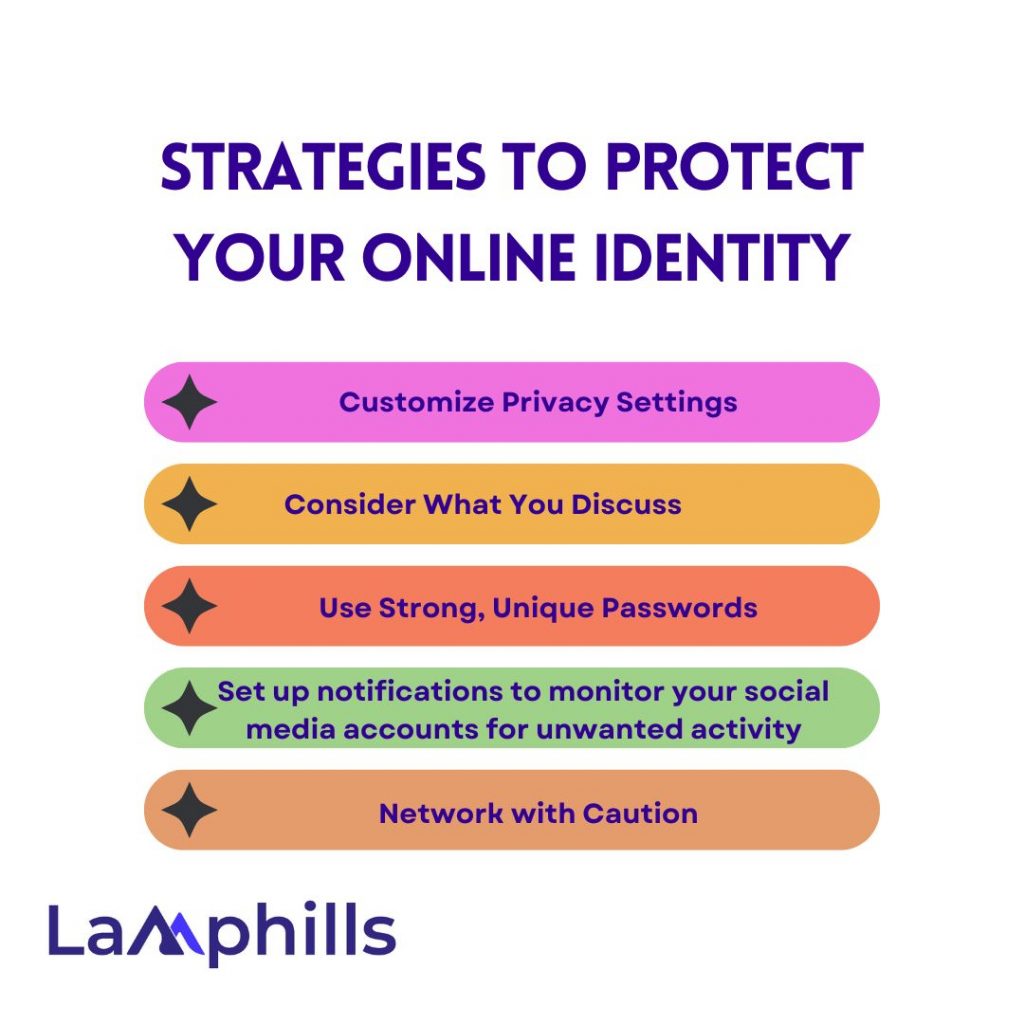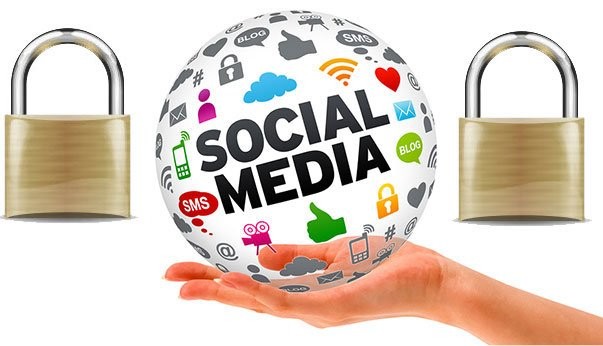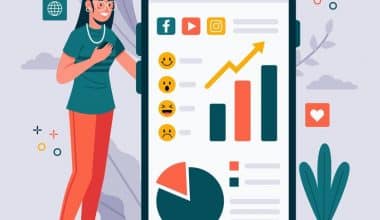I recall vividly the day I first encountered the concept of digital privacy. My colleague turned pale while looking over social media around lunch. He had seen his personal images, intended for friends and family, on an unusual website marketing health supplements. That experience not only spoiled his appetite but also highlighted the possible hazards hiding on these sites, prompting me to take action. As I dug deeper, I discovered how to protect oneself on a social networking site, which is an essential ability for anyone trying to secure their online presence in today’s digital world.
In today’s interconnected world, social media is a battlefield between privacy and security. Whether you’re a corporate executive, a small business owner, or a freelancer, how you manage your presence on these platforms can have a huge impact on both your career and personal life.
According to the Pew Research Center (2019), 81% of individuals believe they have little to no control over the data that firms acquire from them. This data demonstrates an increasing concern and the necessity for strict steps to protect our digital selves.
What are Social Networking Sites?
Social networking sites, sometimes known as “friend-of-a-friend” sites, are based on the concept of traditional social networks in which you connect with new people through people you already know. Some networking sites are exclusively social, allowing users to form friendships or love relationships, while others are primarily focused on making business connections.
Although the features of social networking sites vary, they all allow you to provide information about yourself and give some form of communication mechanism (forums, chat rooms, email, instant messages) for connecting with other users. Some sites let you search for people based on specific criteria, but others require you to be “introduced” to new people via a connection you share. Many of the sites feature communities or subgroups organized around a certain interest.
Key Takeaways
- Social networking sites expose users to risks such as identity theft, cyberbullying, and data misuse, which underscores the need for rigorous privacy settings and cautious sharing of personal information.
- Key measures to protect oneself include tightening privacy settings, being judicious about the information shared, using strong passwords, and being cautious about connections and third-party app permissions.
- Developing media literacy is crucial in navigating social media responsibly, involving skills like source checking, understanding the context, and verifying the authenticity of information before sharing.
- The S.O.U.R.C.E. Template aids in evaluating the reliability of information by checking its Source, Origin, Uniqueness, Relevance, Currency, and Evidence, helping prevent the spread of misinformation.
- Regularly updating security settings, monitoring account activity, and using tools like password managers are recommended to maintain security and protect one’s digital persona on social networking platforms.
What Security Issues Do These Social Networking Sites Have?
Social networking sites rely on connections and conversation, thus they encourage you to share some personal information. People may not be as cautious when sharing personal information over the internet as they would in person due to the anonymity it gives.
The lack of physical interaction can lead to a false sense of security. Individuals may design information for their pals, ignoring the possibility of others seeing it. They may also seek to impress potential friends or associates with their insights.
While the majority of people who use these sites pose no concern, evil people may be drawn to them due to their ease of use and the abundance of personal information available. The more knowledge bad people have about you, the more easily they can exploit you. Predators may create online relationships and then persuade unsuspecting victims to meet them in person. That could result in a perilous situation. The personal information can also be utilized to launch a social engineering attack.
A malicious person could use information you offer about your location, hobbies, interests, and friends to impersonate a trusted friend or convince you that they have the authority to access other personal or financial information.
Furthermore, due to the popularity of these sites, attackers may exploit them to disseminate malware. Sites that provide applications produced by third parties are more vulnerable.
Attackers may be able to construct customized applications that look to be innocent while infecting your machine or sharing your data without your permission.
How Can You Protect Yourself On a Social Networking Site?
To help guide you through safely managing your online interactions, I’ve put together some essential steps. These tips have been invaluable in helping me protect myself on social networking site while enjoying the benefits of being online.
#1. Limit the quantity of personal information you share
Do not post information that could expose you, such as your address or details about your schedule or habits. If your connections share information about you, be sure it is not more than you are okay with others knowing. Be mindful when sharing information, especially images, about your connections.
#2. Remember that the Internet is a public resource
Only share information that you are comfortable with everyone seeing. This includes information and images in your profile, blogs, and other forums. Furthermore, once you submit material online, you cannot retract it. Even if you remove content from a website, saved or cached versions may remain on other people’s computers.
#3. Be wary of strangers
The internet makes it easy for people to falsify their identity and motivation. Consider limiting who can contact you on these websites. If you contact strangers, be cautious about how much information you reveal or agree to meet in person.
#4. Be skeptical
Don’t believe everything you read online. People may share incorrect or inaccurate information about a variety of issues, including their own identities. This is not always done with a malevolent purpose; it could be unintentional, an exaggeration, or a joke. Take reasonable measures, however, and attempt to verify the legitimacy of any material before acting.
#5. Evaluate your settings
Make use of a website’s privacy settings. Some sites’ default settings may allow everyone to view your profile, but you can adjust them to limit access to specific users. Despite these safeguards, there is still a danger that private information will be disclosed, so do not upload anything you wouldn’t want the world to see. Sites’ options may change from time to time, so check your security and privacy settings frequently to ensure that they are still acceptable.
#6. Be careful of third-party applications
While they may bring amusement or utility, exercise caution when picking which ones to activate. Avoid dubious applications and change your settings to minimize the amount of information they may access.
#7. Use strong passwords to protect your account.
If your password is hacked, someone else may get access to your account and impersonate you.
#8. Check privacy policies
Some websites may share information with other companies, such as email addresses or user preferences. This may result in an increase in spam. Also, look into the policies for managing referrals to ensure that you do not mistakenly sign your friends up for spam. Some sites will continue to send emails to anybody you refer until they sign up.
#9. Keep software, especially your web browser, up to date
Install software upgrades to prevent attackers from exploiting known issues or vulnerabilities. Many operating systems provide automatic updates. If this option is accessible, you should activate it.
#10. Use and maintain anti-virus software
Anti-virus software protects your computer from known viruses, allowing you to detect and remove them before they cause damage. Because attackers are always creating new viruses, it is critical to keep your definitions up to date.
Why Social Networking Security is Essential for Professionals
As a professional, whether I’m involved in marketing, education, or entrepreneurship, I know the stakes are high. My online presence greatly influences my reputation, career opportunities, and professional relationships. The information I share on social media could potentially be misused for identity theft, cyberbullying, or even corporate espionage. That’s why I believe it’s crucial for me, and for you, to be proactive in protecting our presence on these platforms.
Advanced Strategies to Protect Your Online Identity

Protecting your digital footprint is essential in today’s interconnected world, where privacy concerns are more relevant than ever. Here are some straightforward strategies to help safeguard your online presence effectively:
#1. Customize Privacy Settings
Most social networking sites provide thorough privacy settings for controlling who can view your posts, personal information, and profile. Take the time to review and update these settings so that only the appropriate audience has access to your material. Platforms like Facebook, for example, allow you to adjust the visibility of each post as well as regulate connectivity with third-party applications.
#2. Consider What You Discuss
It’s easy to discuss personal accomplishments, travel experiences, or weekend plans online. However, sharing too much can leave you exposed to attacks. A simple post about being on vacation may indicate to potential burglars that your property is empty. Similarly, providing precise personal information might help social engineers and identity thieves create targeted assaults.
#3. Use Strong, Unique Passwords
While this may seem obvious, compromised passwords are a leading cause of security breaches. Use a combination of letters, numbers, and symbols, and avoid using the same password for several websites. Password managers, for example, can let you keep track of many passwords without having to worry about forgetting them.
#4. Set up notifications to monitor your social media accounts for unwanted activity
If your social network provides login alerts, activate them. They can alert you to any unwanted access from new devices or places.
#5. Network with Caution
Accept connection requests only from persons you know or share a mutual connection with. Cybercriminals frequently construct phony profiles to obtain access to your or your network’s data. Examine profiles and be wary about accepting requests from those with insufficient depth or mutual connections.
The Power of Media Literacy
Imagine you’re a financial advisor. The most basic form of defense against false news is to block questionable accounts. This is a good first step, but it is not sufficient. Developing excellent media literacy abilities is critical.
Here’s what media literacy includes:
- Source Checking: Before sharing any information, always check its source. Look for respected news organizations or well-established websites that have a track record of fact-checking.
- Lateral Reading: Do not rely on headlines or social media snippets. Read the entire article or content item to get the full picture.
- Cross-referencing: If a piece of information appears to be too excellent (or poor) to be real, check it with other reliable sources.
By mastering these media literacy abilities, you will become a more informed social media user, making you less vulnerable to disinformation tactics.
The SO.U.R.C.E. Template
Do you feel overwhelmed by the steady flow of information? Consider using the S.O.U.R.C.E. Template for quick and easy fact-checking.
- Source: Who is publishing the information? Are they a reliable source with a positive reputation?
- Origin: From where did the information originate? Can you track it down to a credible source?
- Uniqueness: Is the information unique to this source, or has it been reported elsewhere.
- Relevance: Is the content pertinent to your interests or expertise?
- Currency: When was the information published? Is it out of date, or does it reflect new developments? Does the content offer reliable evidence to back up the assertions made?
Use the S.O.U.R.C.E. Template to critically examine social media content before sharing it with your network. After inadvertently publishing a bogus health suggestion on social media, I discovered the value of media literacy. I actively began using the S.O.U.R.C.E. Template in my social media practice. This not only kept me from spreading disinformation, but it also helped me build a more respectable internet profile. What was the result? My followers’ faith in me has grown, as has my reputation for offering dependable health and wellness material.
Conclusion
In today’s digital age, social media literacy is no longer a luxury; it is a requirement for professionals from all backgrounds. By cultivating a critical eye and using tools like the S.O.U.R.C.E. Template, you can confidently traverse the social media landscape, protecting yourself from fake news and defending your professional reputation.
Are you ready to be a more selective social media user? What methods do you currently employ to analyze material online? Please share your tips in the comments section below!
Related Articles
- How To Build & Measure Brand Affinity: The Ultimate Guide to Fostering Lasting Connections
- Social Media Etiquette: Best Practices
- How Does Having a Social Media Policy Benefit a Business (+Free Policy Template)
- 10 BEST SOCIAL MEDIA MONITORING TOOLS IN 2024
- Media Coverage: Your Blueprint to Captivating Audiences and Making Headlines






